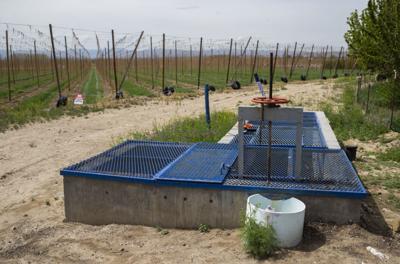Spring never seems to last very long around here.
Just as the first daffodils and tulips start to pop, so do the temperatures. In a flicker, we’re all complaining about the unrelenting heat of another Yakima Valley summer.
And this year, just as local irrigation districts are turning on the water to customers across the Yakima Valley, federal Bureau of Reclamation officials are ordering some of them to dial it back a little.
Noting lagging precipitation and below-average regional reservoir levels, the feds announced last week that junior water rights holders can expect just 63% of their allotments this year. Senior water rights holders will still get their full supply.
It wasn’t the driest winter we’ve ever had — precipitation came in at 82.4% of normal during the October-March wet season, and the latest surveys measured water content in high-country snow at 78% of average as of April 1.
But Reclamation has to cut junior allotments (users who acquired water rights after 1905) to make sure senior rights holders (whose rights predate 1905) get their fill.
Sure, we could still get a few late-season storms that would brighten the outlook a little, but nobody’s expecting things to get dramatically better. Long-range weather forecasts see hotter temperatures and less precipitation than we normally get.
“A lot can happen between now and May 1,” Bureau of Reclamation hydrologist Mikolaj Lewicki offered in an interview with the YH-R’s Donald W. Meyers.
Lewicki’s right, of course. In recent decades, spring squall here and there and some late-year mountain snows have eased dire water predictions.
No matter how it shakes out in the next month or two, though, it’s shaping up to be another long, hot — and worrisomely dry — summer.
Welcome to the land of the shrub-steppe.
In addition to the obvious implications a year like this pose for the agriculture sector, months of searing temperatures and sparse rainfall will of course raise everyone’s wildfire risks.
We were relatively fortunate last year — the 165,000-acres that burned in Washington last year was far less than the 10-year average of nearly 473,000 acres.
That’s not much consolation to the owners of the 400 homes that were damaged or lost to wildfires in 2023, however.
“Even though our numbers might say, ‘Oh, what a great fire season,’ that doesn’t give you the sense of what the impact was,” the Washington Department of Natural Resources’ Angie Lane told Oregon Public Broadcasting last fall. “We did have a catastrophic year.”
So as it often is, spring is a mixed blessing in the Yakima Valley. It’s a time of grand beauty, intoxicating scents and sounds. It’s when we breathe a collective sigh of contentment as we feel another winter melting away.
At the same time, with orchards and local gardens starting to erupt in colorful blooms, it’s a good time to remember that none of it would be possible without our precious water supply.
Let’s not take it for granted.




